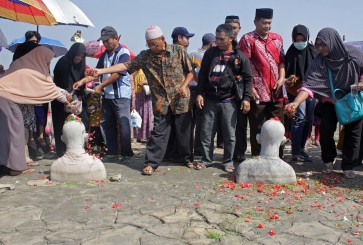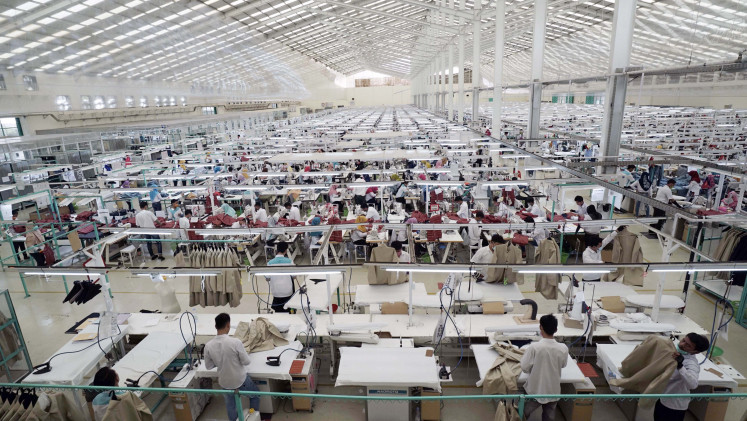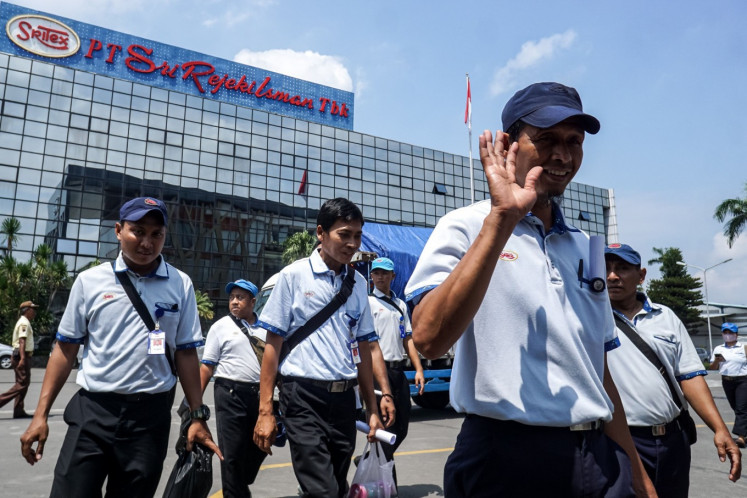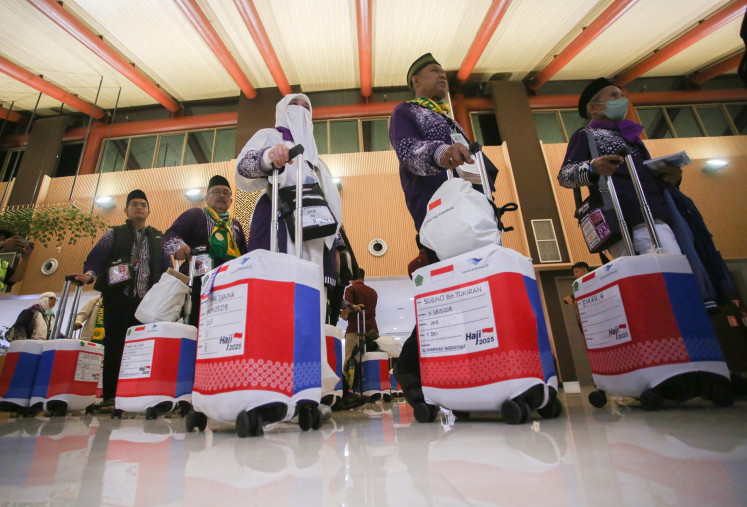Disaster preparedness: Learning from Japan
The magnitude 8
Change text size
Gift Premium Articles
to Anyone

T
he magnitude 8.9 earthquake and resulting tsunami that struck parts of Japan have undoubtedly increased our awareness about the potential for disasters. It also marks a time for serious reflection about how our cities are built to respond to calamities.
As a country located on the Ring of Fire, cities in Indonesia are highly prone to earthquakes and tsunamis like what happened in Aceh in 2004 and Mentawai, West Sumatra, in 2010, and the flash floods in Wasior, West Papua in 2010 and volcanic eruptions like at Mount Merapi in 2010.
In fact, 150 out of 497 municipalities and regencies in Indonesia are under the threat of tsunamis. About 80 percent of the municipalities and regencies are located near coastlines and are at risk of sea level-induced floods, abrasion, seawater intrusion and land subsidence due to the destruction of protective coastal mangrove forests.
Ironically, disaster-prone areas that spread from Sumatra to Papua and Kalimantan to Java have grown and developed into densely populated areas. In addition, Indonesia, as an archipelagic country, is also highly vulnerable to the adverse impacts of climate change like rising sea levels and water crises.
Climate-related disasters since the 1950s and 1960s have increased by an approximate ratio of four. Between 2003 and 2005, there were 1,429 disasters, with 53 percent related to floods, landslides, droughts or hurricanes.
City administrations in Japan were fully aware that they lived under the constant threat of earthquakes and tsunamis. A wise understanding of that situation was commonly held by regional governments when developing cities to respond to disasters.
We witnessed how the city emergency response system worked effectively during the powerful earthquake and tsunami that recently shook Japan. Buildings in cities proved to resist the earthquake and infrastructure looked solid when the tsunami struck.
Routine earthquake simulation drills had citizens well prepared physically and mentally for an earthquake as well as post-disaster survival. But, what about us in Indonesia?
Based on Law No. 24/2007 on Disaster Management and Law No. 26/2007 on Spatial Planning, city planning should take into consideration the possibility of natural disasters. The development of disaster responsive urban areas is very important as our cities are full of buildings and densely populated so that even a small disaster will certainly cause the loss of life and property.
Our cities need to prepare mitigation (land use, green open space), adaptation (local wisdom, disaster response culture), technology (innovation of green technology) and investment (environmentally friendly policies and environment-oriented investments like tax incentives, green banking).
Disaster management includes mitigation, alertness, response and recovery. This is the cycle of activity with or without a disaster.
To create an efficient city that is able to anticipate, mitigate and adapt to disasters, the city can be divided into sub-urban areas that are able to live independently. A sub-urban area can be a modern village that provides all the convenience and needs of a community that lives in an environmentally friendly integrated area.
Integrated areas combine all the needs of humans from living, working and recreation comfortably and efficiently. Those regions support office facilities, schools, vertical residences (1 hotel: 3 apartments: 6 flats), entertainment centers, shopping centers, houses of worship, parks and sports fields (disaster evacuation space).
Integrated area development is undertaken around mass transit hubs such as railway stations and bus stops. Residents simply need to walk or bike to destinations within the region.
As an archipelagic country, the development of inter-island transportation infrastructure (sea, air) and telecommunications and electricity networks should also be further enhanced so that there is no difficulty in granting relief and the delivery of assistance during a disaster.
As part of the city’s disaster response, all buildings must meet seismic standards. In accordance with Law No. 28/2002 and Jakarta bylaw No. 7/2010, both on building development, already existing high-rise buildings must be renovated in order to comply with rules for extreme earthquake resistant buildings (up to 9.0 on the Richter scale), while the construction of new buildings must comply with such quake resistant standards.
In Japan, local wisdom was transformed into modern life. The concept of traditional architecture, with materials and techniques flexible in an earthquake, were applied to modern buildings in Japan.
City facilities were readied in anticipation of disasters. Public buildings such as schools and hospitals were prepared for evacuation in case of a disaster while city parks and sports fields were prepared as evacuation sites. At the same time, road infrastructure was prepared as disaster evacuation routes and equipped with routes, maps of disaster-prone areas, manual evacuation signs and evacuation points.
Parks and sports fields provided modules for the quick installation of tents for temporary shelters, public kitchens, schools and children’s play spaces. Parks have public toilets, pump water hydrants for reserves of clean, energy-based electricity and backup solar cells. On normal days, parks can become water catchment areas, lungs of the city and tourist attractions.
Meanwhile, for coastal cities, seaside areas of green belt were constructed in the form of coastal forests or mangrove forests with a minimum thickness of 100-200 meters from the shoreline to absorb a tsunami and to prevent coastal erosion and floods and to develop mangrove forest ecosystems. Those areas should be free of buildings.
Apart from the physical development of quake resistant properties and infrastructure, the dissemination of awareness, outreach, training and rehearsal of disaster-related matters is also a necessity. It can be done through local cultural activities such as puppet shows, ketoprak comedy shows and dangdut music contests.
Such disaster awareness could also be developed through curriculum on disaster management from the primary to the university level, while disaster management procedures should be disseminated into all levels of society so that when disaster strikes people know exactly what to do, when to save themselves and where to go to find evacuation sites as well as how to survive.
The development of urban disaster response is expected to minimize the loss of life, property, public facilities and social and economic activities of citizens. Lessons learned from cities in Japan are that they were prepared in a time of disaster, for nobody knows exactly when a disaster will strike.
The writer is chair of the Indonesian Landscape Architecture Study Group in Jakarta.









